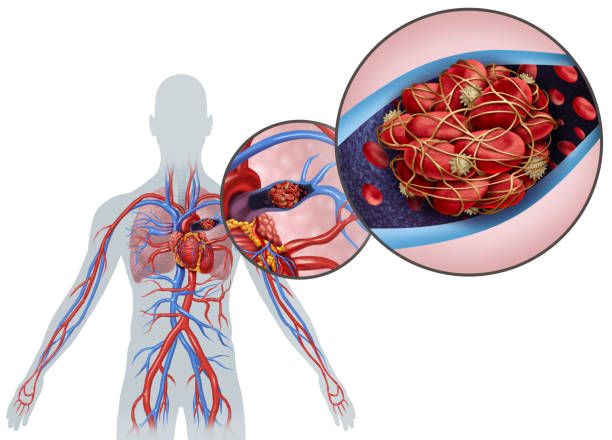A Safer Therapy for Pulmonary Embolism: Catheter Directed Thrombolysis Shows Promise in New Research
Pulmonary embolism (PE), a life-threatening condition caused by blood clots in the lung, has long posed a significant risk to patients worldwide. However, a recent study published in the Canadian Medical Association Journal (CMAJ) suggests that catheter-directed thrombolysis (CDT) may offer a safer alternative for high-risk PE patients. The research indicates a lower risk of death and bleeding complications associated with CDT compared to other treatments.
Pulmonary embolism (PE) is currently the third leading cause of death from heart disease after myocardial infarction (heart attacks) and stroke. Early diagnosis is essential as a staggering one in three deaths occur within the first few hours compared with only 7% of deaths in properly diagnosed and treated cases.
Catheter-directed thrombolysis (CDT) is a procedure that involves delivering low doses of medication directly into the pulmonary arteries using a catheter. However, due to the lack of comprehensive research on its safety and efficacy, treatment guidelines for CDT vary because of this uncertainty.
In a comparative analysis of different treatments for pulmonary embolisms, Israeli researchers have made a significant breakthrough. The study found that CDT was associated with a 55% decreased risk of death as well as lower risks of major bleeding and brain bleeds among 65%, when compared to other treatment options.
Dr. Bruria Hirsh Raccah, Clinical pharmacist in the cardiology department at the Hadassah Medical Center and researcher at the Hebrew University of Jerusalem and a co-author of the study, cautions that “further research is necessary before drawing definitive conclusions. However, the findings indicate that CDT should be considered the preferred treatment among eligible patients, given its safety and effectiveness, especially when compared to the higher toxicity of systemic thrombolysis.”
“Although this study should be interpreted as hypothesis generating, our findings suggest that, among patients eligible for CDT and where facilities exist, CDT should be the preferred treatment, given its safety and effectiveness, and given the higher toxicity of systemic thrombolysis” writes Dr. Bruria Hirsh Raccah, a researcher at the Hebrew University of Jerusalem, Jerusalem, Israel, with coauthors.
The study was part of Stav Yanko’s dissertation at the Hebrew University of Jerusalem.
The study was co-authored by Bruria Hirsch Raccah, Stav Yanko and other researchers from Hadassah Medical Center.
The Hebrew University of Jerusalem is Israel’s premier academic and research institution. With over 25,000 students from 90 countries, it is a hub for advancing scientific knowledge and holds a significant role in Israel’s civilian scientific research output, accounting for nearly 40% of it and has received over 11,000 patents. The university’s faculty and alumni have earned eight Nobel Prizes and a Fields Medal, underscoring their contributions to ground-breaking discoveries. In the global arena, the Hebrew University ranks 77th according to the Shanghai Ranking, making it the top-ranked Israeli institution. To learn more about the university’s academic programs, research initiatives, and achievements,
Full bibliographic information
Published on 31/07/2023 by Hebrew University of Jerusalem
“Mortality and safety assessment of catheter-directed thrombolysis compared with systemic thrombolysis and anticoagulation in patients with intermediate or high-risk pulmonary embolism: systematic review and network meta-analysis”
Medscape article: https://www.medscape.com/viewarticle/993506?src=
Official website: http://new.huji.ac.il/en





